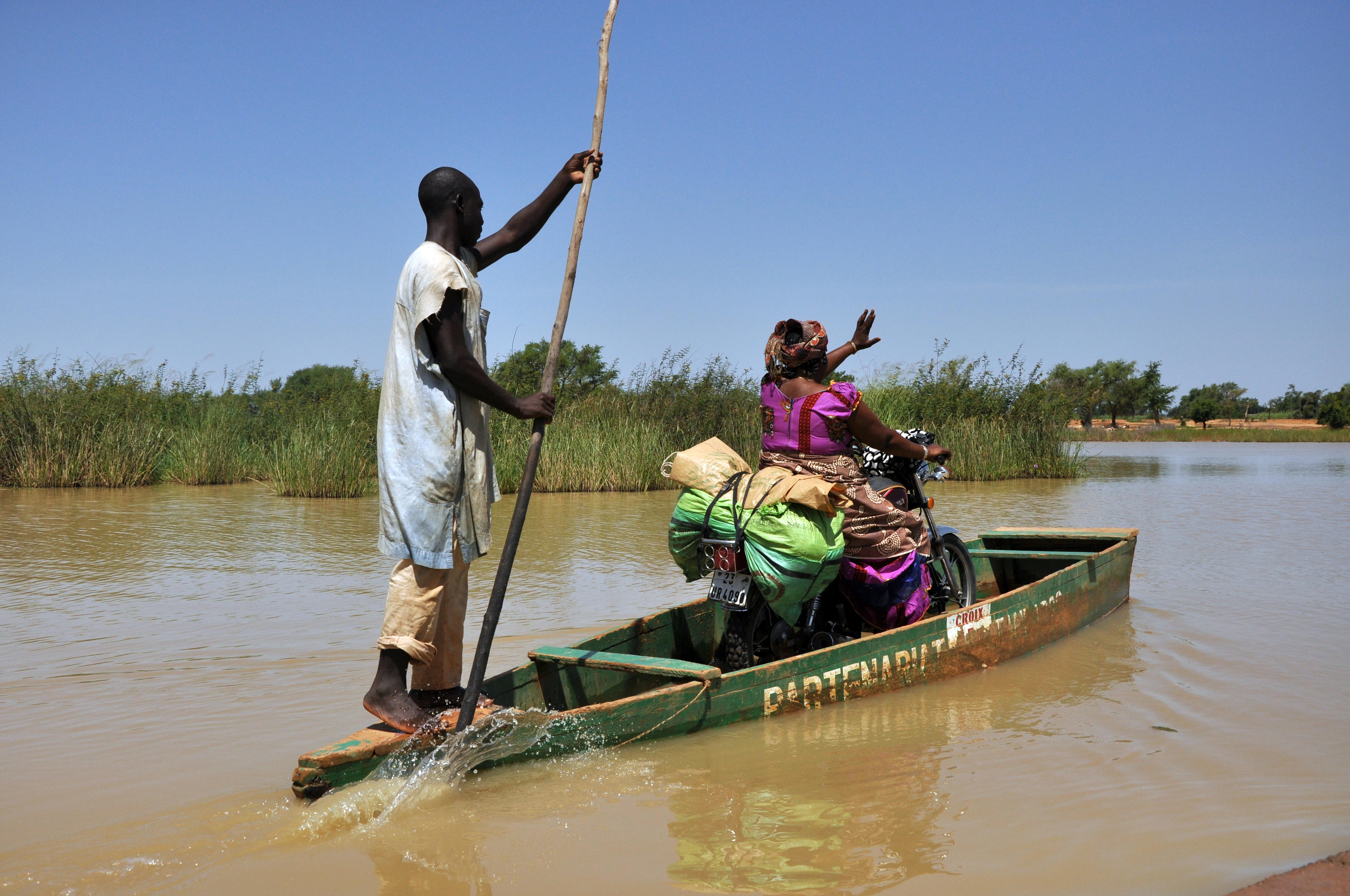Social situation A growing humanitarian crisis
Transport during a flooding in Burkina Faso
In the crisis-hit regions, numerous health centres and schools have had to close, which has meant that around one million children and youths have not been able to attend school (as at March 2024, more recent figures are not available).
The food situation in Burkina Faso is critical. According to the United Nations, about 2.3 million people were affected by food insecurity at the end of 2023. Chronic malnutrition affects one in five children between the ages of six months and five years. Rises in food prices and the COVID-19 pandemic have further exacerbated what was already a precarious situation. The UN Office for the Coordination of Humanitarian Affairs (OCHA) estimates that more than six million people are dependent on humanitarian assistance.
Development progress under threat
Since the 1990s, Burkina Faso has made significant progress in terms of development, although this progress is now threatened by the protracted crises in the country. For example, between 2000 and 2018 the proportion of children attending primary school more than doubled, with a particularly strong increase taking place in the proportion of girls enrolled in school. The literacy level has improved accordingly: whilst 66 per cent of the total population over the age of 15 still lack basic reading and writing skills, that figure has fallen to 46 per cent in the age group of 15-to-24-year-olds.
Maternal mortality has been significantly reduced and progress has also been made on bringing down child mortality. Among the under-fives, child mortality has been steadily declining since 1990, going from a rate of just under 200 per 1,000 live births down to 83 in 2021. Nevertheless, that is still a very high rate. The reduction in the number of HIV infections among 15-to-49-year-olds, from 2.1 per cent (in 2000) to 0.6 per cent (in 2021), can also be viewed as a major achievement. Life expectancy has increased from 51 years (in 2000) to 59 years (in 2021).
Huge challenges
Burkina Faso is one of the world’s least developed countries (LDCs). On the most recent United Nations Human Development Index (HDI) the country was ranked 186th out of 193 countries. More than 40 per cent of its roughly 23 million people are living below the national poverty line. Most people make their living from agriculture and are therefore particularly vulnerable to the consequences of climate change.
Burkina Faso’s population is growing by almost three per cent a year. More than 40 per cent of the population are under the age of 15. If population growth is not slowed down, by 2050 there will be almost twice as many people living in Burkina Faso as there are today. In order to ensure universal access to basic education and to provide income opportunities for the young generation, the country would need to invest massively in the construction of schools and the training of teachers and create several hundred thousand new jobs every year.
As at: 15/02/2024
